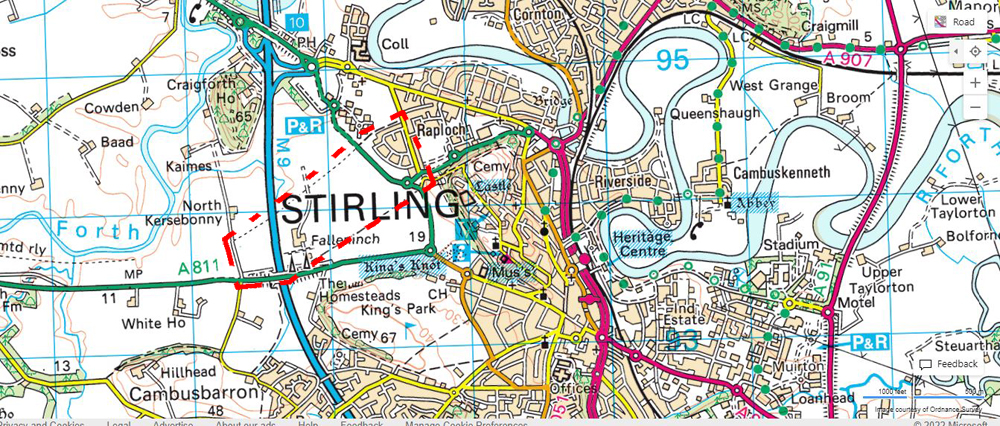The Inter-war Years – New Civilian Aerodromes
< Military History around the Forth
The period between the end of World War I (1918) and the beginning of World War II (1939) saw a change from the slow wood-and-fabric biplanes of World War I to fast, streamlined metal monoplanes, creating a revolution in both commercial and military aviation.
During this period civil aviation became widespread and many daring and dramatic feats took place such as round-the-world flights, air races and barnstorming displays. Many commercial airlines were started during this period.
Long-distance flights for the luxury traveller became possible for the first time; the early services used airships but, after the Hindenburg disaster, airships fell out of use and the flying boat came to dominate.
Around the Forth, two civilian aerodromes opened in this period.
Macmerry
When Penston II Landing Ground closed in 1919, an adjacent site was developed as Macmerry airfield by the Edinburgh Flying Club, and this was used for scheduled flights by North Eastern Airways from 1936-39. (Civilian flights to/from Edinburgh Turnhouse only commenced in the 1940s after WWII.)
 This 1938 timetable lists the telephone number for Edinburgh Airport as Tranent 84 – i.e. Macmerry
This 1938 timetable lists the telephone number for Edinburgh Airport as Tranent 84 – i.e. Macmerry
In 1939 the airfield was taken over by the RAF as RAF Macmerry a satellite to the nearby fighter station RAF Drem.
It was used by a succession of RAF Army Cooperation Command squadrons using Blenheim, Lysander and Mustang aircraft; RAF fighter training, coastal strike and long-range fighter training).
It was also used by an RNAS communications squadron flying de Havilland Dominie, Avro Anson, Fairey Swordfish and Stinson Reliant aircraft
As the war in Europe drew to a close, RAF Drem and RAF Macmerry were transferred to the Royal Navy as HMS Nighthawk and HMS Nighthawk II in April and June 1945 respectively. However, the end of the war curtailed the need for naval aircrews and RNAS Macmerry was handed back to the RAF in December 1945. It reopened as a civil airfield in 1946, but it closed in 1953, losing out to Edinburgh Turnhouse.
Grangemouth
RAF Grangemouth opened as the civilian Central Scotland Airport in early 1939.
 Grangemouth Airport Terminal Building
Grangemouth Airport Terminal Building

This timetable from 17th April 1939, shows North Eastern Airways flights from Aberdeen to/from London Croydon, via Perth Airport (at Scone) and Grangemouth.
Its short life as a civilian airport ended in September 1939 at the outbreak of WWII.
From September 1939 – March 1941 RAF Grangemouth was used by 602 Squadron flying Spitfires, 141 Squadron flying Bristol Blenheims and Gloster Gladiators and 263 Squadron flying Westland Whirlwind helicopters.
In December 1940 it was used for training day-fighter-pilots flying Spitfires.
From June 1940 to March 1941 it was used by No. 614 Squadron RAF flying Westland Lysanders
After the war, it was used as a gliding school and by No. 13 Refresher Flying School RAF, then by RAF Maintenance Command until closure in 1955.
(In 2008, a memorial garden was unveiled to commemorate the hundreds of Polish and other international pilots who trained at the airfield. 71 trainee pilots from 11 countries died whilst in training.)
Many British and Polish pilots who died in operational service are buried close by in Grandsable Cemetery.


The two pre-war hangars still remain for industrial use, part of the land has become Inchyra Park for various recreational activities and one of the two runways is better known these days as Inchyra Road.
Stirling
Stirling Aerodrome (sometimes known as Raploch Aerodrome) was occasionally used by Northern and Scottish Airways (founded in 1934 by bus company manager, George Nicholson) for civil flights, while two separate adjoining fields became recognised as an Automobile Association registered landing ground, but all activity ceased with the start of the Second World War.

